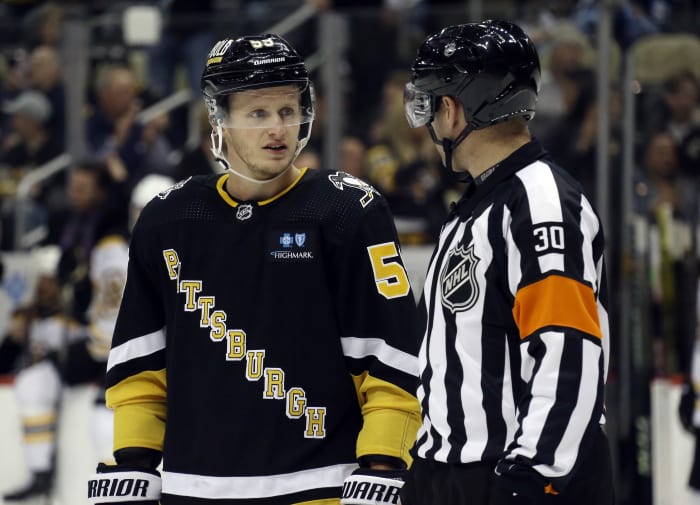At the NHL’s GM meetings last Tuesday, one of the topics covered was potential rules changes – and right at the top was the much-reviled coach’s challenge for offside plays. The GMs did not choose to make a change at this point, and that’s hardly surprising.
There remains a viewpoint among many hockey gatekeepers that too much change, or radical change, would hurt the entertainment product. The “Leave The Game Alone!-ers” are understandable, in a way. We all want the comfort of familiarity in our lives. Adjusting to new things takes time and energy that some people just don’t want to devote to the sport.
However, when you consider the changes other pro sports have made and are making to their game, you can see that the pro sports product is never static. People and sports are always trying to bring in new fans, and be fairer to the athletes involved.
The MLB is a good example: that league will implement a pitch clock in the 2023 season, and it will make bases bigger and ban the defensive shift. They’re also keeping the rule that puts a runner on second base in extra innings. This writer can’t express how much we loathe that particular rule, but you have to give MLB credit for (a) reacting to a defensive system that hurts a team’s offense and (b) taking steps to make the game faster and better overall.
So, when the NHL takes small steps forward, or no steps at all, it feels like it’s not nearly enough to keep the product fresh and new. For example, we’ve said previously that the league should place a fourth official in the stands to be an “eye-in-the-sky” referee, able to catch rulebreaking in a way the on-ice officials simply cannot anymore, thanks to the increased speed of the game.
That would be a huge change in many respects, but it makes sense to progressive-minded people to have a hockey observer as a referee-of-last-resort who can whistle down controversial plays and then go to video review if need be. But we’re not holding our breath that this suggestion will ever be taken seriously.
Video review always seems to be a topic of interest at GM meetings, and this latest meeting was no different. As per NHL.com, one GM last week suggested video review be added to plays where a player shoots the puck over the glass in the defensive zone. But NHL senior vice president of hockey operations Colin Campbell said it’s at times difficult to get consistent TV replay and find the proper angle to see the play. The result? No change to that situation.
In a chat years ago, current New York Islanders GM Lou Lamoriello told us the rulebook is a fluid entity, and the NHL can never predict the types of plays that can sprout up and cause consternation.
He didn’t use the example, but we will: the “Sean Avery Rule” shows the league can move extremely quickly when it wants to.
In 2008, Avery infamously stood in front of New Jersey Devils goalie Martin Brodeur and waved his stick near Brodeur’s face. The very next day, the NHL announced an alteration of the unsportsmanlike conduct rule that included Avery’s actions in front of Brodeur.
It’s clear that, when it feels like it, the NHL can and will make changes in reaction to situations that nobody had thought of before. When it then moves slowly to make changes in most other predicaments, it’s frustrating to see their willingness to leave the sport as it is.
The NHL hasn’t had a research and development camp for years now, and that’s also a shame.
The league should be experimenting with things – slightly bigger nets, for instance – and pushing the envelope to improve the game. It’s highly unlikely, from our perspective, that taking steps to make the sport more intriguing and exciting isn’t going to drive away fans.
People used to say that about the reduction of fighting in games, and lo and behold, with fighting almost completely outlawed, the sport is as popular as it ever was. The same goes for mandatory visors. Some people squawked for long periods, saying visors would drive up the instances of high sticking, and make players less accountable for their actions during games. Neither prediction has come true. Fewer players suffer devastating eye injuries, and that’s a direct relation to the change in visor usage. Change can be excellent.
Alas, the next NHL GM meetings are likely going to look exactly like the latest meeting did. There will be talk, but little to no action in terms of rule changes. That will please some people, but those of us who believe hockey can be better will look on, once again, in dismay. The conservative gatekeepers of the sport simply aren’t willing to try new things, and that’s unlikely to change anytime soon.
.
